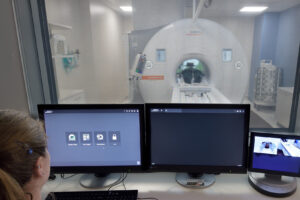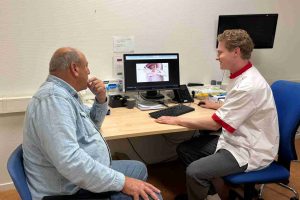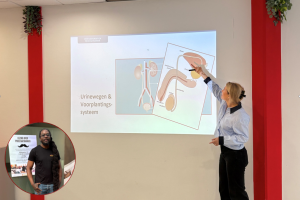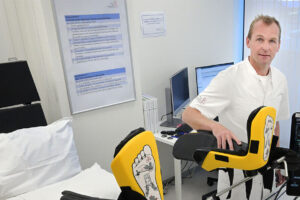The European Association of Urology has recently hosted the largest urological conference in Europe. During the event, Marias Hagens, former physician-researcher in the Urology Department at the Netherlands Cancer Institute, presented research data regarding the improvement of the diagnostic process for prostate cancer from the Center for Early Diagnostics. This research provided new insights into ways to improve prostate cancer diagnostics.
The diagnostic process for prostate cancer is often complicated and can lead to unnecessary tests. To prevent this, national and international guidelines recommend using calculating someone’s risk to determine whether additional diagnostics are required. One such risk calculator is the Prostaatwijzer, developed in Rotterdam, which calculates the risk of prostate cancer and makes recommendations regarding further steps in the diagnostic process. Our own research has shown that the current methods are not always accurate enough, often underestimating the risk in men seen by a urologist.
Research on improved prostate diagnostics
At the Netherlands Cancer Institute’s Center for Early Diagnostics, we have conducted research to improve the diagnostic process for prostate cancer over the past year, with a focus on reducing unnecessary MRI scans. Can we predict whether someone with elevated PSA levels will show suspicious abnormalities on an MRI scan before the scan is made? Our current findings indicate that the answer is yes. By taking into account factors such as age, rectal exam, and PSA levels, we were able to identify three groups: low, moderate, and high risk. Omitting MRI scans for men in the low-risk group could prevent nearly 20% of MRI scans without missing a single prostate cancer diagnosis.
Future research
Over the coming years, the Center for Early Diagnostics will continue to investigate predictive approaches to make the diagnostic process even more efficient, and to further reduce unnecessary tests.









